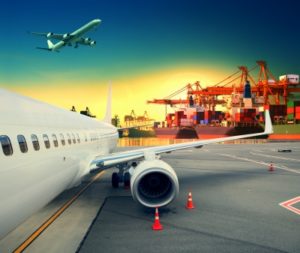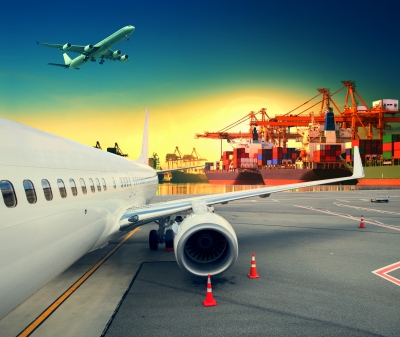 Leaders of the Association of Southeast Asian Nations (ASEAN) have adopted the Master Plan on ASEAN Connectivity 2025 (MPAC 2025), which aims to achieve a more connected and integrated regional community to promote greater competitiveness and inclusivity.
Leaders of the Association of Southeast Asian Nations (ASEAN) have adopted the Master Plan on ASEAN Connectivity 2025 (MPAC 2025), which aims to achieve a more connected and integrated regional community to promote greater competitiveness and inclusivity.
Adopted during the latest summit in Vientiane, Laos, the MPAC 2025 succeeds the Master Plan on ASEAN Connectivity 2010. MPAC focuses on five strategic areas—sustainable infrastructure, digital innovation, seamless logistics, regulatory excellence, and people mobility—and was developed in consultation with relevant ASEAN sectoral bodies and other stakeholders. The remaining initiatives from MPAC 2010 were evaluated and incorporated into the MPAC 2025.
“The Master Plan on ASEAN Connectivity 2025 is ambitious, but it is also practical. We have designed strong implementation mechanisms to ensure that effective coordination takes place among various agencies and we can see real change happen over the next 10 years,” Saleumxay Kommasith, Minister of Foreign Affairs of Laos and Chair of ASEAN Coordinating Council which oversees connectivity matters for the regional body, said.
The master plan notes that greater connectivity is the foundation for achieving the political-security, economic, and socio-cultural pillars of an integrated ASEAN Community.
According to the report, the region’s customs and logistics costs remain far higher than international benchmarks.
“Improving logistics competitiveness will be crucial if ASEAN is to maintain its recent strong manufacturing growth as wages rise across the region,” it points out.
MPAC 2025’s objectives for logistics connectivity include lower supply chain costs in each ASEAN member-state and improved speed and reliability of supply chains.
To reduce supply chain costs, competitiveness through enhanced trade routes and logistics is to be strengthened. This initiative aims to analyze time and costs for different stages of priority trade routes in ASEAN in order to identify bottlenecks as there is a lack of detailed information on key logistic networks in ASEAN.
In order to improve speed and reliability of supply chains, MPAC 2025 says key chokepoints should be addressed. The plan is to develop a supply chain framework that will provide a holistic measure of supply chain performance in ASEAN. This will be done by identifying specific trade corridors (ideally matched to those selected for the logistics database initiative) in ASEAN and then understanding chokepoints in the supply chain processes related to these corridors, such as establishing a mechanism to support and implement border management measures.
An agreed action plan will then be developed with the logistics coordinating councils (or equivalent bodies) for each of the ASEAN member-states involved in the prioritized trade routes to tackle the identified chokepoints.
A range of outcome and input indicators will then be established to track performance on these action plans. Initially, these outcome indicators will draw on existing data sources (e.g., the World Economic Forum’s Enabling Trade Index), but over time will be replaced with more specific and granular information from the ASEAN logistics database.
MPAC 2025 could also play a critical coordinating role in supporting the implementation of the ASEAN Strategic Transport Plan 2016-2025, which intends to establish a formal platform/cooperation mechanism for exchanging information on implementation of regional cross-border operations.
In terms of infrastructure, the MPAC 2025 aims to help investors seize opportunities in sustainable infrastructure by improving project preparations, enhancing infrastructure productivity and supporting cities in adopting sustainable practices. It notes that ASEAN needs at least US$110 billion of infrastructure investment each year to support future growth.
Digital technologies in ASEAN, on the other hand, could potentially be worth up to $625 billion by 2030, which may be derived from increased efficiency, new products and services. Capturing digital innovation requires establishing regulatory frameworks for the delivery of new digital services; supporting the sharing of best practices on open data; and equipping micro, small and medium enterprises with the capabilities to access these new technologies.
The master plan, in terms of regulations, focuses on standards harmonization, mutual recognition and technical regulations, as well as reducing the number of trade-distorting non-tariff measures in order to achieve regulatory excellence. MPAC 2025 notes that ASEAN member-states have already reduced tariffs significantly, benefiting consumers in the region.
As for people mobility, MPAC 2025 will focus on providing comprehensive information on travel options and simplifying visa application processes as the number of tourists from outside ASEAN could reach 150 million by 2025. The master plan also suggests developing high-quality qualification frameworks in critical vocational occupations, which ASEAN member-states can implement according to their national circumstances, and encouraging greater mobility of intra-ASEAN university students. – Roumina Pablo
Image courtesy of khunaspix at FreeDigitalPhotos.net





